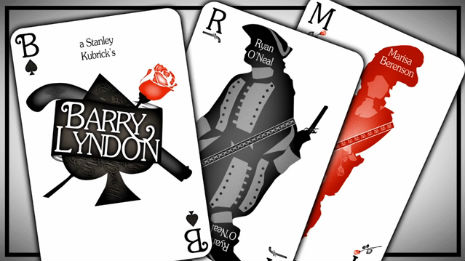

Superb animated timeline of Stanley Kubrick’s filmography by animator Martin Woutisseth. Music by Romain Trouillet.
(via KFMW)


Superb animated timeline of Stanley Kubrick’s filmography by animator Martin Woutisseth. Music by Romain Trouillet.
(via KFMW)
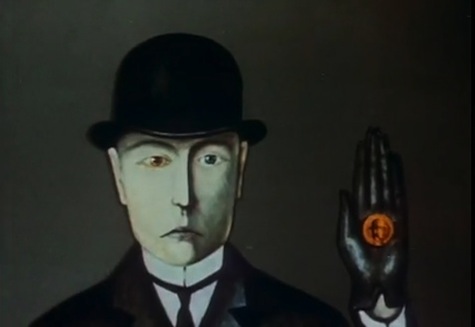
In the opening titles of his 1968 animated short Glass Harmonica, Russian director Andrei Khrzhanovsky claims to present a cautionary against “boundless greed, police terror, [and] the isolation and brutalization of humans in modern bourgeois society.” Of course, it was more complex than that.
At the time Khrzhanovsky made the film, Russian animation had experienced a creative renaissance that spanned most of the ‘60s, fuelled by the Soviet Union’s post-Stalinist liberalization policy best known as the Krushchev Thaw. Although that period yielded cutesy and colorful satires like Fyodor Khitruk’s 1962 short Story of a Crime, Glass Harmonica—which posits music to symbolize beauty repressed by avarice—stands apart.
Amid desolate modern landscapes, Khyrzhanovsky and his dozen animators tell the tale with some industrial age and Renaissance visual elements, along with some zany zoomorphic caricatures of paranoia and envy. Buoyed sonically by Alfred Schnittke’s Quasi una sonata and drawing from Breugel, Dali and George Dunning (the director of Yellow Submarine), Glass Harmonica reaches even proto-Python-esque heights towards the end.
Despite its semi-socialist utopian resolution, Glass Harmonica comes off as surprisingly quaint and archaic, even as an indirect product of Kruschev’s less ideologically rigid era.
After the jump: check out part 2 of Glass Harmonica…

Fun, fun, fun cartoon music video of Richard Hell And The Voidoids “The Kid With The Replaceable Head.”
The version of “...Replaceable Head” used in the cartoon is the remixed and partially re-recorded version that appears on the Destiny Street Repaired album which was released in 2008, a reconstruction of 1982’s Destiny Street. The history of the record is an interesting one. In his review of Destiny Street Repaired, Bill Meyer gives us some insight to the album’s resurrection. Here’s an excerpt from Meyer’s article:
It took Hell five years to get around to recording a follow-up to Blank Generation. The Voidoids had been defunct for over a year and the man was soul sick, junk sick, and ready to give up the rock game. But he had some songs, a label ready to give him some money, a palpable need for that cash, and guitarist Robert Quine’s phone number, so in 1982 they pulled together a band — Hell on bass, Quine and the one-named Naux on guitars, Fred Maher on drums — to make one more record. Things went as planned for a week or two, but after cutting the backing tracks Hell lost his nerve and refused to come into the studio for a week and a half. According to Quine, he and Naux spent that time overdubbing every idea they’d ever wanted to try, which depending on your perspective turned the music into either “high-pitched sludge” (per Hell in the liner notes to the Spurts career retrospective) or the aforementioned glorious mess. After Hell finally dragged his sorry ass into the studio to finish the record, it sat in bad business limbo for another year before Line Records finally put it out.
Ever since then he’s expressed his disappointment with the result, and in 2008 Hell geared up to put it right by re-recording the vocals and lead guitars over rough mixes of the rhythm tracks.”
Hell brought in Bill Frisell, Ivan Julian and Marc Ribot to contribute to Destiny Street Repaired and the result was an album shocked like Dr. Frankenstein’s monster into new life. As Meyers puts it, the album is “more full and satisfyingly full-on.”
Despite the fact that overall there are fewer guitar tracks, the guitars are actually louder on Repaired than they are on the Line LP, and any record that showcases Ribot, Julian and Frisell in a rocking mood is nothing to ignore. The weirdly striated frequency spectrum of the original mastering job, which seemed as thin as mountain air in the higher frequencies, has been replaced by something much more full and satisfyingly full-on. And as a singer, Hell Mk 2008 manages to hit more of the notes with more force than his more desperate and debilitated self a quarter century earlier without going for any misguided notion of perfection.”
Bill Meyer’s entire review of Destiny Street Repaired can be read at Dusted.
Update 4/25: Meyer gives credit to German label Line Records for being the first label to release Destiny Street, which may be true for Germany but not the USA. In fact, it was released in the States on Marty Thau’s legendary Red Star records. In France, it was released by Celluloid. All in 1982. As to the source of the money for the making of the record, my bet is on Thau. I’ve e-mailed Marty and am waiting to hear back.
(Thanks, Mona).
Update 4/25: The always gracious Marty Thau responded to my questions regarding Destiny Street and its intriguing history:
Red Star financed the original version of Destiny Street and eventually licensed it to Line Records in Germany, who didn’t pay royalties until they were caught years later.
Not only did Red Star finance the original version of “DS” but it’s distributor, Jem Records, manufactured it for Red Star before anyone else in the world. History must not be rewritten no matter how bad the vibes might be.
Red Star’s version of “DS” was chosen as the #3 best record of the year by the NY Times in ‘82 by Robert Palmer. I believe that Richard’s new version of “DS” doesn’t improve upon the original, as much as he’d like to think it does.
Back in the day Richard was a useless drug addict who didn’t live up to his promise. He’ll admit to that.”
“The Kid With The Replaceable Head (2008)” is available as part of the Richard Hell retrospective cd and can be purchased here.
Here are both versions;
Personally, I prefer the sludgy, raw basement sound of the original recording. The re-recorded version is a little clean with a slick sheen and the poppy background vocals up in the mix work against the punk Voidoid vibe. But, either way, it’s a great song and Richard Hell is undoubtedly a legend not to be messed with…unless he doin’ the messin.

Think of it as a Schoolhouse Rock episode about the varieties of right-wing assholes…
The Dipshit Doodlebug Institute takes an in-depth look at the Republican Party and breaks them down into 10 distinct types.
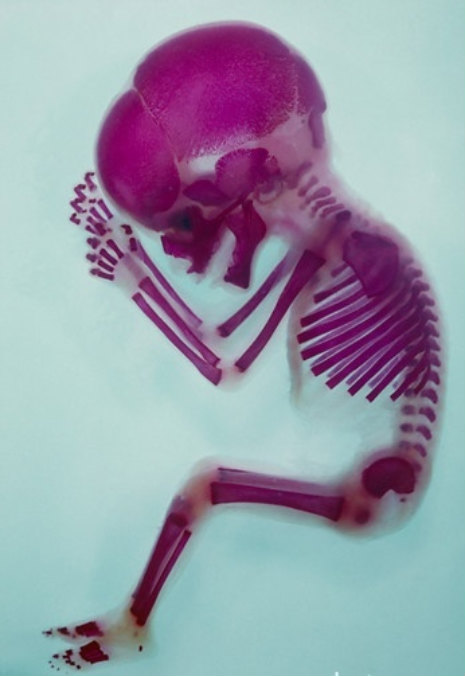
Butch Tuffington made this short video using “Happy Birthday” by electronic music pioneer Delia Derbyshire.
As usual, Mr.Tuffington delivers something both cosmic and comic. Zen montage with a lysergic twist.

There’s a fascinating article in the New York Times, That Noisy Woodpecker Had an Animated Secret, about Shamus Culhane, a pioneer of modern animation, who slipped homages to avant-garde artists into several Woody Woodpecker cartoons in the 1940s.
Sixteen years ago Tom Klein was staring at a Woody Woodpecker cartoon, The Loose Nut, when he started seeing things. Specifically, Mr. Klein watched that maniacal red-topped bird smash a steamroller through the door of a shed. The screen then exploded into images that looked less like the stuff of a Walter Lantz cartoon than like something Willem de Kooning might have hung on a wall.
“What was that?” Mr. Klein, now an animation professor at Loyola Marymount University, recalled thinking. Only later, after years of scholarly detective work, did he decide that he had been looking at genuine art that was cleverly concealed by an ambitious and slightly frustrated animation director named Shamus Culhane.”
Culhane was an admirer of experimental film makers, Eisenstein in particular, as well as abstract painters and managed to work some of his artistic obsessions into his commercial work.
High art meets popular art inThe Loose Nut when Woody “is blown into an abstract configuration…a convergence of animation and Soviet montage.”
In lowbrow mode, Culhane enjoyed pranking Universal Studios and Walt Lantz by throwing not-so-subtle sexual imagery into his cartoons. In The Greatest Man In Siam, Culhane’s libido goes nuts in a veritable onslaught of genitalia. You don’t need to be Freud to notice the erect phalluses and vaginal doorways. At the 4:36 point in the clip, there’s a glimpse of a pink passageway that incorporates both yin and yang.
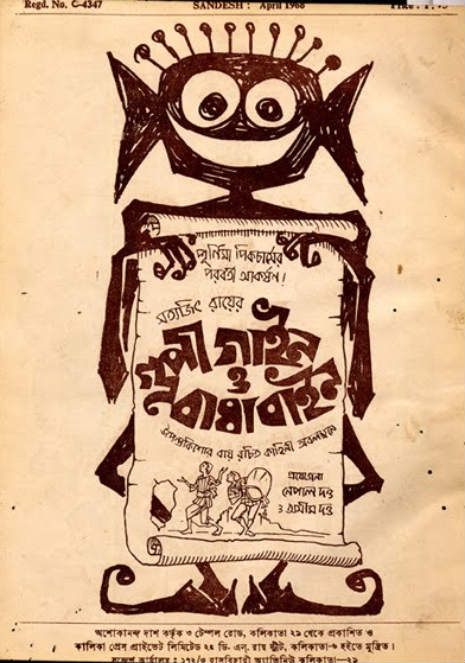
Goopy Gyne Bagha Byne (1968) was written, scored and directed by Satyajit Ray. It is Ray’s most commercially successful film and to this day is hugely popular in India.
The cinematography by Shoumendu Roy and choreography by Sambhunath Bhattacharya is particularly enchanting in this fantasy sequence combining live action, shadow puppets and Indian percussion instruments.
Our comic heroes Goopy and Bagha meet the King Of Ghosts in the jungle and he grants them three wishes (boons): they will get food whenever they want, the second: they can go anywhere they want and the third: they will master art of music and everybody will be spell bound and motionless while they sing.
Trippier than E.T. and every bit as weirdly wonderful as anything in Eraserhead, Goopy Gyne Bagha Byne is a ‘head” film for all ages.
Goopy Gyne Bagha Byne is one of 17 Ray films restored by the Academy of Motion Pictures Arts and Sciences, but the restored version is still unavailable on DVD. According to Film Threat magazine…
[...] the restored print is still in the AMPAS vaults – there is no temperature-controlled film vault in India that could hold the restored version. Since the restored version is not available, older worn-out prints are still circulating. But these prints have clearly seen better days – they are so drained that even the surprise color shot at the film’s end look monochromatic.”
Criterion or Image are you listening?
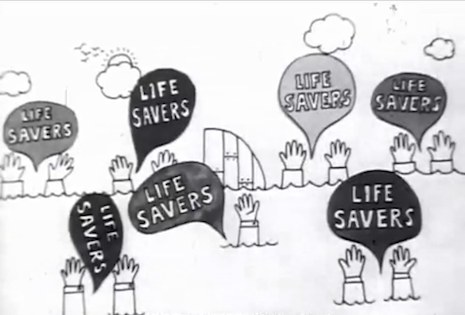
There’s no absolute proof but brilliant Los Angeles pop culture historian Domenic Priore believes this 1966 commercial to be the work of a young pre-Monty Python Terry Gilliam. I say it’s true. (Oops, it’s not. See below…) Gilliam did after all attend high school in my beloved San Fernando Valley and worked at Carson Roberts advertising agency (along with Pet Sounds lyricist Tony Asher) in Los Angeles before finding his ultimate destiny in the U.K. There is unfortunately no official record or listing of Gilliam’s early TV commercial work, though there are doubtless many more such examples out there.
Update: Terry Gilliam’s co-worker at Carson Roberts, one Mike Salisbury has claimed creator-ship of this clip. He says: ”...Ed Ruscha worked there also. One of the first TV spots I did was there, for Baskin Robbins ice cream . Terry Gilliam and I worked on some things together but this one I created, wrote and animated. They gave us a lot of freedom. (it was a fun place to work—the in-house producer was the model for Mr. Magoo.)...” Also this from DM facebook friend Susan Pile: This direct from my pal TG: “...I had nothing to do with the commercial. And no idea who might have been the clever bastard. I’m up to my neck in my first opera: Berlioz’s The Damnation of Faust. All foolishly backed by the English National Opera. Luckily I’m surrounded by real pros that are keeping me from drowning….” So there ya go !
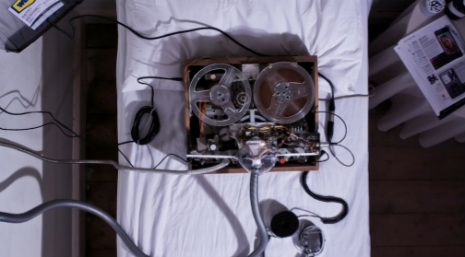
The sad demise of a Uher reel to reel tape recorder is told in this short stop motion animated film by Tom McDermott. Mechanical Sympathy uses over 6500 still photos and tremendous craftsmanship to bring an inanimate object to life only to kill it. I was actually sad to see that tape deck die.
Music:
Steppin’ Out - Electric Light Orchestra
Wedding March - Mendelssohn
Lullaby - Fisher-Price Lullaby Baby
Lovesick Blues - Hank Williams